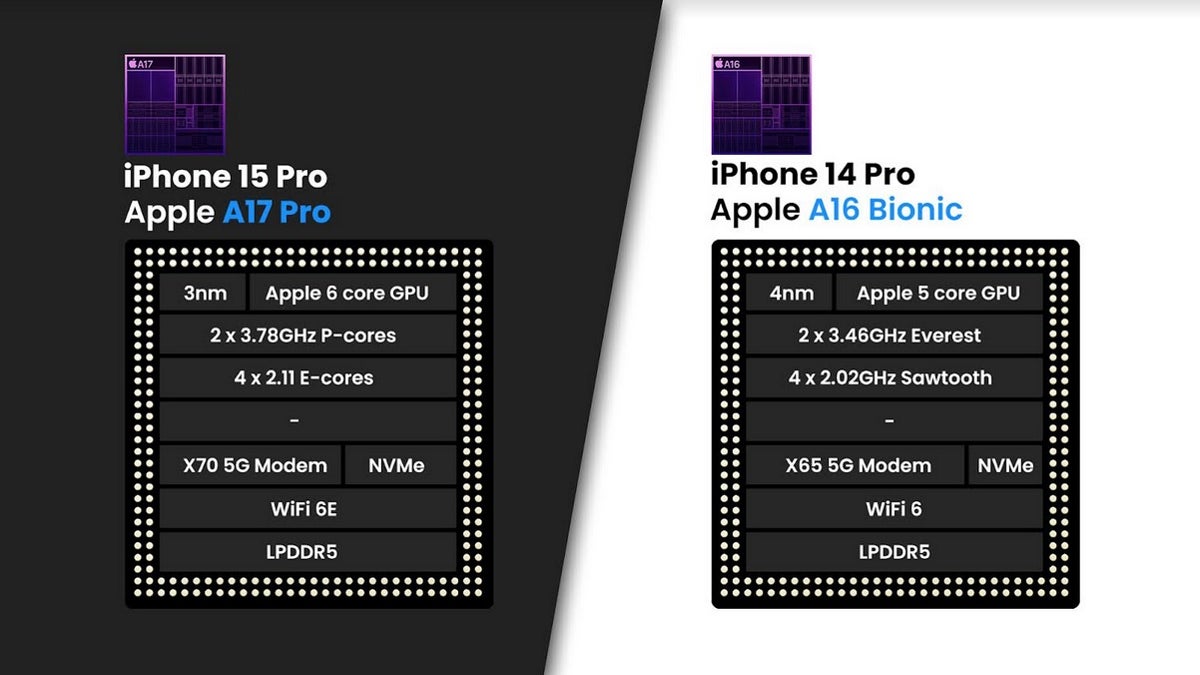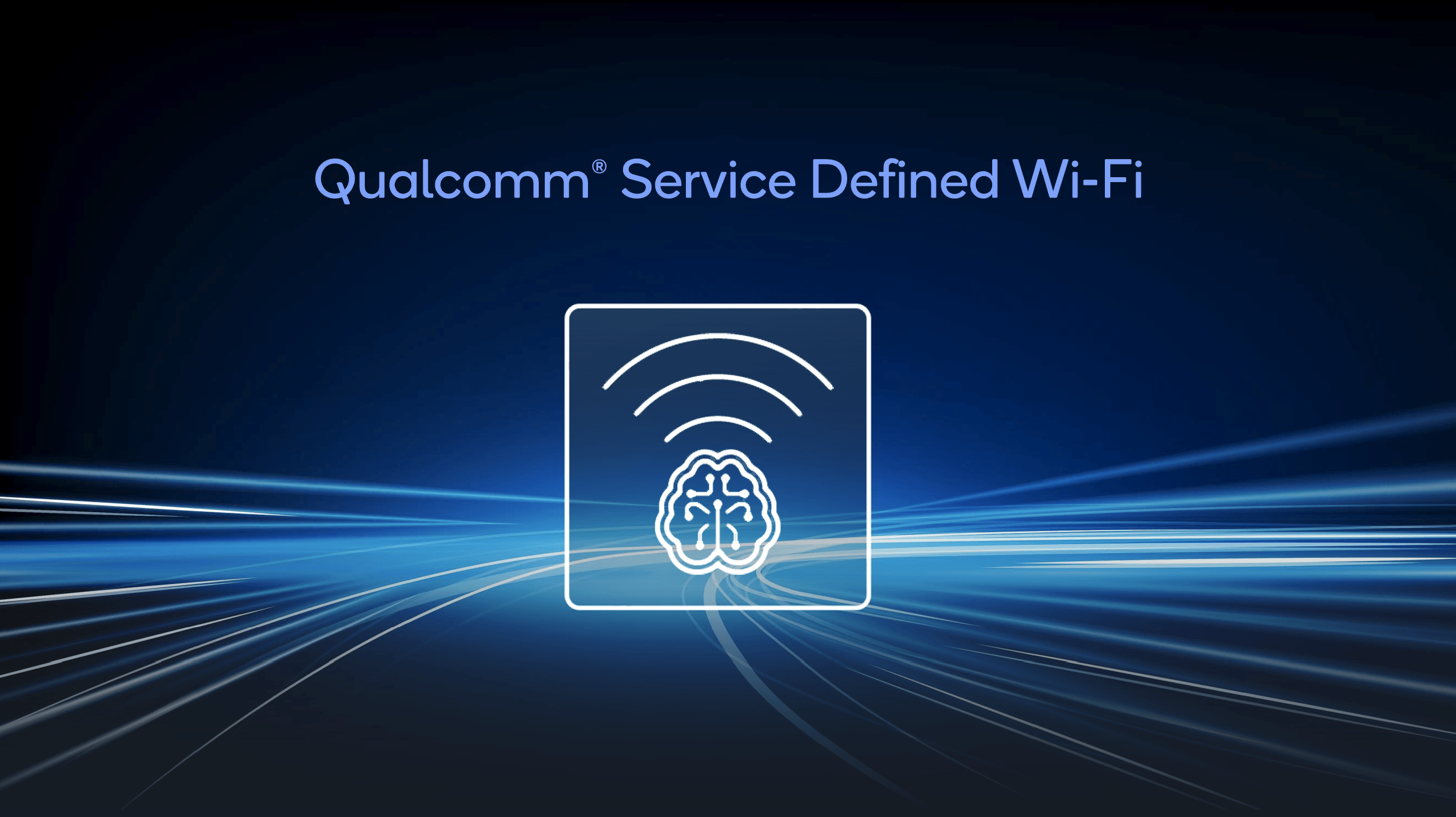
What’s new about the 3nm A17 Pro chipset?
Simply put, as process node numbers drop, the feature size of a chip, including transistors, gets smaller. Smaller transistors mean that more can fit inside a chip raising the component’s transistor count. The higher a chip’s transistor count, the more powerful and/or energy-efficient it is.
| A-series chip | Process node | iPhone model | Transistor count |
|---|---|---|---|
| A17 Pro | 3nm | iPhone 15 Pro, iPhone 15 Pro Max | 19 billion |
| A16 Bionic | 4nm | iPhone 14 Pro, iPhone 14 Pro Max, iPhone 15, iPhone 15 Plus | 16 billion |
| A15 Bionic | 5nm | iPhone 13, iPhone 13 mini, iPhone 13 Pro, iPhone 13 Pro Max | 15 billion |
| A14 Bionic | 5nm | iPhone 12, iPhone 12 mini, iPhone 12 Pro, iPhone 12 Pro Max | 11.8 billion |
The A17 Pro continues to use a 2+4 configuration with the two high-performance CPU cores running up to 10% faster with a maximum clock speed of 3.78GHz. That compares to the maximum P-core clock speed of 3.46GHz on the A16 Bionic. The four high-efficiency cores have a clock speed of 2.11GHz, and Apple says that its E-cores are three times more efficient than the competition.
The GPU also supports Mesh shading which will also improve how realistic games look. The bottom line here is that Apple is beginning to take the GPU used on a mobile device like the iPhone, to desktop levels.
The A17 Pro includes Qualcomm’s Snapdragon X70 5G modem which offers AI capabilities not found on the A16 Bionic’s Snapdragon X65 5G modem. The X70 5G modem also supports all commercial 5G bands from 600MHz low-band spectrum to 41GHz mmWave. And on the iPhone 15 Pro line, the phones feature 8GB of RAM for the first time in iPhone history.
The A17 Pro’s neural engine, which is used for machine learning, handles features such as autocorrect and on-device voice recognition. While the number of cores in the neural engine remains at 16, the number of operations it can handle per second has doubled from the A16 Bionic to 35 trillion operations per second. This should improve the speed that it takes for the iPhone to handle machine learning and AI tasks.
How did the A17 Pro fare in benchmark tests?
With Apple ditching the Lightning port this year for USB-C, a dedicated USB 3 controller has been added to the A17 Pro chipset and it supports data transfer speeds as fast as 10Gbps. Unfortunately, the USB-C cable that comes with the iPhone 15 Pro models only supports USB 2 transfer speeds, so you’ll have to purchase a USB 3 cable to take advantage of the fastest transfer speeds that the iPhone 15 Pro and iPhone 15 Pro Max offer.
The 3D Mark benchmark measures how well the GPU performs and the iPhone 15 Pro Max ranged from a high of 3103 to a low of 2394. The iPhone 14 Pro Max had a higher high of 3382 but also had a lower low of 2327. And while the Galaxy S23 Ultra had the highest high score at 3828, it also had the lowest low at 1951. It’s possible that some extra heat that the iPhone 15 Pro Max generated during testing might have come into play and reduced its score.
The improved GPU allows the iPhone 15 Pro line to support AAA video games
With the A17 Pro delivering “pro-grade” graphics, expectations are high from gamers expecting console quality game-play from the iPhone 15 Pro line. Apple’s senior vice president of Worldwide Marketing, Greg Joswiak, said that the new chip, “ushers in a new chapter of performance and games never before seen on iPhone.” AAA games, which are those titles that have been heavily promoted by mid-sized and major publishers, are coming to smartphones for the first time.

While many iPhone users might not be able to discern the difference between the A16 Bionic and the A17 Pro, those who are serious gamers should be able to notice a difference in how the graphics look with the new chipset. Having said that, the improvement in battery life from last year’s Pro models might be disappointing to those who were expecting a huge increase in this department thanks to the slightly larger battery capacities on the Pro models, and the 3nm production technology used to build the A17 Pro chipset.
We should note that this year, the A17 Pro will be the only 3nm SoC powering a smartphone as TSMC rewarded Apple for being its biggest customer by giving it a sweetheart deal and reserving all of its 3nm production for Apple. Next year could be different and if more phone manufacturers decide to go with a 3nm chipset, Apple might have an incentive to really let the A18 Pro fly.






